
- The Visionary Architect Behind Sagrada Familia: Antoni Gaudí's Masterpiece
- The Historical Context of the Sagrada Familia's Construction
- Symbolism and Meaning: Understanding Sagrada Familia's Architectural Elements
- The Cultural Significance of Sagrada Familia in Modern Barcelona
- Challenges Faced During the Construction of Sagrada Familia
- The Ongoing Journey: Future of Sagrada Familia's Completion
The Sagrada Familia, an iconic symbol of Barcelona, captivates millions with its intricate designs and towering spires. Yet, behind its breathtaking architecture lies a rich tapestry of history and vision that reflects the aspirations of its creators.
In exploring The Fascinating Story Behind Why Sagrada Familia Was Built, we uncover the profound motivations of architect Antoni Gaudí and the spiritual significance that continues to inspire generations. This masterpiece is not just a church; it is a testament to artistic innovation and a deep devotion that transcends time.
The Visionary Architect Behind Sagrada Familia: Antoni Gaudí's Masterpiece
Antoni Gaudí, the visionary architect behind the Sagrada Familia, was not merely a builder but a profound creator whose work transcended conventional design. His unique approach combined elements of nature, religion, and geometry, resulting in a structure that is both an architectural wonder and a spiritual journey. Gaudí believed that architecture should reflect the divine, and his work at Sagrada Familia is a manifestation of this belief.
Gaudí was deeply influenced by his Catholic faith, which shaped his vision for the Sagrada Familia. He sought to create a space that would not only serve as a place of worship but also as a symbol of God's glory. His innovative use of light and color through stained glass and intricate stone carvings reflects his desire to connect the earthly with the divine. Gaudí's architectural philosophy can be summed up in several key principles:
- Nature as Inspiration: He drew heavily from the forms and structures found in nature.
- Symbolism: Each element of the design serves a symbolic purpose, conveying religious narratives.
- Integration of Arts: Gaudí incorporated various artistic disciplines, including sculpture and painting, into his architectural vision.
Despite facing numerous challenges during its construction, including Gaudí's untimely death in 1926, the Sagrada Familia continues to evolve. Today, it stands as a testament to Gaudí's genius and unwavering commitment to his vision. The ongoing work on the basilica aims to fulfill Gaudí's original plans, ensuring that this masterpiece remains a vital expression of creativity and faith for future generations.
The Historical Context of the Sagrada Familia's Construction
The construction of the Sagrada Familia began in 1882, at a time when Barcelona was experiencing significant social and economic transformation. The Industrial Revolution had spurred urban growth, leading to a surge in population and a demand for new religious spaces. In this context, the church was envisioned as a response to the spiritual needs of the growing community, aiming to create a landmark that would embody both faith and progress.
Initially, the project was commissioned by architect Francisco de Paula del Villar, who envisioned a traditional Gothic-style church. However, after Antoni Gaudí took over in 1883, he radically transformed the design. His approach was revolutionary, reflecting the changing cultural landscape of the late 19th century, as Europe grappled with new ideas about art, architecture, and spirituality. Gaudí's vision was to create a new form of architecture that resonated with the natural world and religious devotion.
The early years of construction coincided with significant events in Spain, such as the rise of Modernisme, a cultural movement that sought to break away from historical styles and embrace innovation. Gaudí's work on the Sagrada Familia was deeply influenced by this movement, as well as his personal beliefs. He aimed to create a structure that was not just a building but a profound representation of his faith, intricately woven into the fabric of Barcelona’s identity.
Over the decades, the construction faced numerous hurdles, including political turmoil, funding issues, and Gaudí's tragic death. Yet, the vision for the Sagrada Familia persisted, drawing support from both the local community and international visitors. Today, the basilica stands as a symbol of resilience and artistic ambition, reflecting the historical context in which it was conceived and the enduring legacy of its creator.
Symbolism and Meaning: Understanding Sagrada Familia's Architectural Elements
The Sagrada Familia is a treasure trove of symbolism that encapsulates the spiritual journey of its creator, Antoni Gaudí. Each architectural element, from soaring spires to intricate facades, serves a purpose beyond mere aesthetics, aiming to convey profound religious narratives that resonate with visitors. This intentional blending of faith and artistry transforms the basilica into a living expression of devotion.
One of the most striking aspects of the Sagrada Familia is its reliance on natural forms to symbolize divine creation. Gaudí utilized elements such as:
- Columns resembling trees: These support the structure while evoking a sense of being in a forest, emphasizing the connection between nature and spirituality.
- Façades representing the Nativity and Passion: Each side tells a different aspect of Christ's life, inviting contemplation on the mysteries of faith.
- Stained glass windows: The use of color and light creates an ethereal atmosphere, symbolizing divine presence and guidance.
Gaudí's innovative approach extended to the overall layout of the Sagrada Familia, which reflects his deep understanding of geometry and its connection to the divine. The basilica's design can be seen as a harmonious integration of:
- Mathematical precision: The interplay of shapes and proportions represents the order of the universe.
- Spiritual symbolism: Each tower, spire, and archway is carefully designed to invoke spiritual significance, creating a sacred space for reflection.
- Unity in diversity: The combination of various architectural styles and techniques embodies inclusivity within the Christian faith.
Ultimately, the Sagrada Familia stands not just as an architectural marvel but as a profound statement of faith, inviting individuals to explore the depths of spirituality through its intricate details. Gaudí's vision lives on, inspiring generations to appreciate the harmonious blend of art and devotion that defines this iconic basilica.
The Cultural Significance of Sagrada Familia in Modern Barcelona
The Sagrada Familia holds a cultural significance that extends far beyond its architectural brilliance. As a UNESCO World Heritage Site, it serves as a focal point for both locals and tourists, embodying the spirit of Barcelona. The basilica not only attracts millions each year, but it also acts as a hub for cultural activities, including concerts and exhibitions, blending the realms of art, spirituality, and community engagement.
In modern Barcelona, the Sagrada Familia symbolizes the city’s dynamic identity and its ongoing evolution. It is a reminder of the rich history of Catalan Modernisme and the innovative spirit that defines Barcelona. The basilica's construction reflects the city's resilience and creativity, making it a source of pride for its inhabitants. Moreover, it offers a profound connection to the city's artistic heritage, highlighting the importance of artistic expression in shaping urban landscapes.
The ongoing construction of the Sagrada Familia serves as a testament to collective dedication, drawing support from architects, artists, and locals alike. This collaborative effort fosters a sense of unity within the community, as they contribute to a project that transcends time and generations. The basilica, in its quest for completion, stands as a beacon of hope and a symbol of the enduring faith that has inspired countless individuals throughout the years.
Furthermore, the Sagrada Familia plays a vital role in promoting tourism and local economy, as it draws visitors from all over the globe. These visitors not only contribute to the economic growth of Barcelona but also engage in cultural exchange, creating a vibrant dialogue between diverse backgrounds. In this way, the Sagrada Familia continues to uphold its significance as a living monument that fosters both spiritual reflection and cultural appreciation.
Challenges Faced During the Construction of Sagrada Familia
The construction of the Sagrada Familia has been fraught with numerous challenges that have shaped its history. One of the most significant obstacles was the lack of consistent funding, which led to sporadic construction phases. The ambitious vision of Antoni Gaudí required substantial financial resources, and interruptions due to economic downturns often delayed progress. Despite these hurdles, local and international donations have played a crucial role in keeping the project alive.
Another major challenge was the technological limitations of the time. When construction began in 1882, engineering tools and techniques were not as advanced as today, which made it difficult to realize Gaudí's complex designs. Many aspects of his vision, including the intricate facades and towering spires, required innovative solutions that had to be developed as the project progressed. This meant that the construction timeline extended well beyond initial estimates, resulting in a project that has spanned over a century.
Additionally, the death of Gaudí in 1926 left the builders with incomplete plans and sketches, complicating the construction process. Future architects struggled to interpret Gaudí's unique style and vision, leading to debates about how to faithfully execute his design. The challenge of maintaining artistic integrity while also adapting to modern construction methods has led to a dynamic evolution of the basilica's architecture, blending historical vision with contemporary techniques.
Moreover, external factors such as political turmoil and war have posed significant risks to the Sagrada Familia. The Spanish Civil War in the late 1930s resulted in the destruction of many of Gaudí's original models and plans, forcing subsequent architects to rely on their interpretations rather than the creator's direct guidance. Despite these challenges, the enduring commitment to completing the Sagrada Familia reflects the resilience of its supporters and the importance of preserving this architectural treasure for future generations.
The Ongoing Journey: Future of Sagrada Familia's Completion
The journey towards the completion of the Sagrada Familia is a fascinating one that continues to unfold. As of now, the basilica is approximately 70% complete, with its final phases projected to conclude by 2026, coinciding with the centenary of Antoni Gaudí’s death. This ambitious timeline reflects the dedication of architects and craftsmen who strive to honor Gaudí's original vision while incorporating modern technologies and methodologies.
Key milestones in the ongoing construction include:
- Completion of the towers: The plan includes 18 towers, each representing an important figure in Christianity, with the central tower dedicated to Jesus Christ standing at a towering height of 172.5 meters.
- Refinement of the facades: Continuous work is being done to enhance the Nativity and Passion facades, which narrate the life of Christ through intricate sculptural details.
- Integration of technology: Advanced computer-aided design tools are being utilized to replicate Gaudí's complex geometries while ensuring structural integrity.
Despite the progress, several challenges remain. The need for ongoing funding is crucial to keep the construction moving forward. Additionally, the interpretation of Gaudí’s designs continues to be a topic of discussion among architects, as they navigate the balance between authenticity and contemporary architectural practices. In this way, the future of Sagrada Familia not only represents a physical structure but also embodies a collaborative vision of art, faith, and community.
As we look ahead, the Sagrada Familia stands as a symbol of hope and perseverance. Its completion will not only fulfill Gaudí's dream but also cement its legacy as a masterpiece that intertwines history, culture, and spirituality. The basilica's ongoing evolution invites each generation to participate in its story, ensuring that it remains a vital part of Barcelona's identity well into the future.
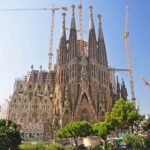 When Will the Sagrada Familia in Barcelona Be Finished? All You Need to Know
When Will the Sagrada Familia in Barcelona Be Finished? All You Need to Know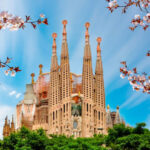 When Was La Sagrada Familia Barcelona Built? A Fascinating Journey Through Time
When Was La Sagrada Familia Barcelona Built? A Fascinating Journey Through Time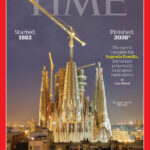 The Sagrada Familia Barcelona: A Masterpiece Completed
The Sagrada Familia Barcelona: A Masterpiece Completed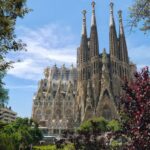 Why Sagrada Familia Was Built: Unraveling the Fascinating Purpose Behind Gaudí's Masterpiece
Why Sagrada Familia Was Built: Unraveling the Fascinating Purpose Behind Gaudí's MasterpieceIf you want to know other articles similar to The Fascinating Story Behind Why Sagrada Familia Was Built you can visit the category WHERE YOU CAN GO.
Deja una respuesta

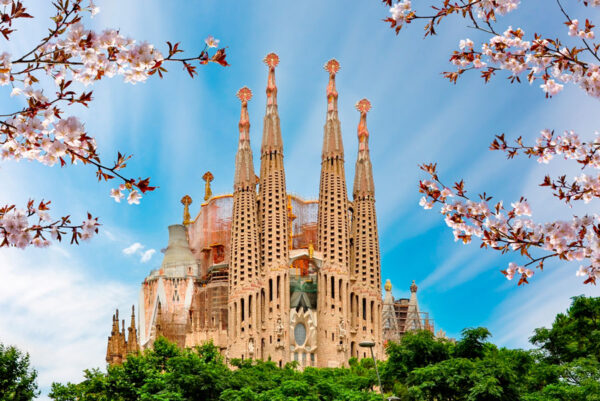








Read more!